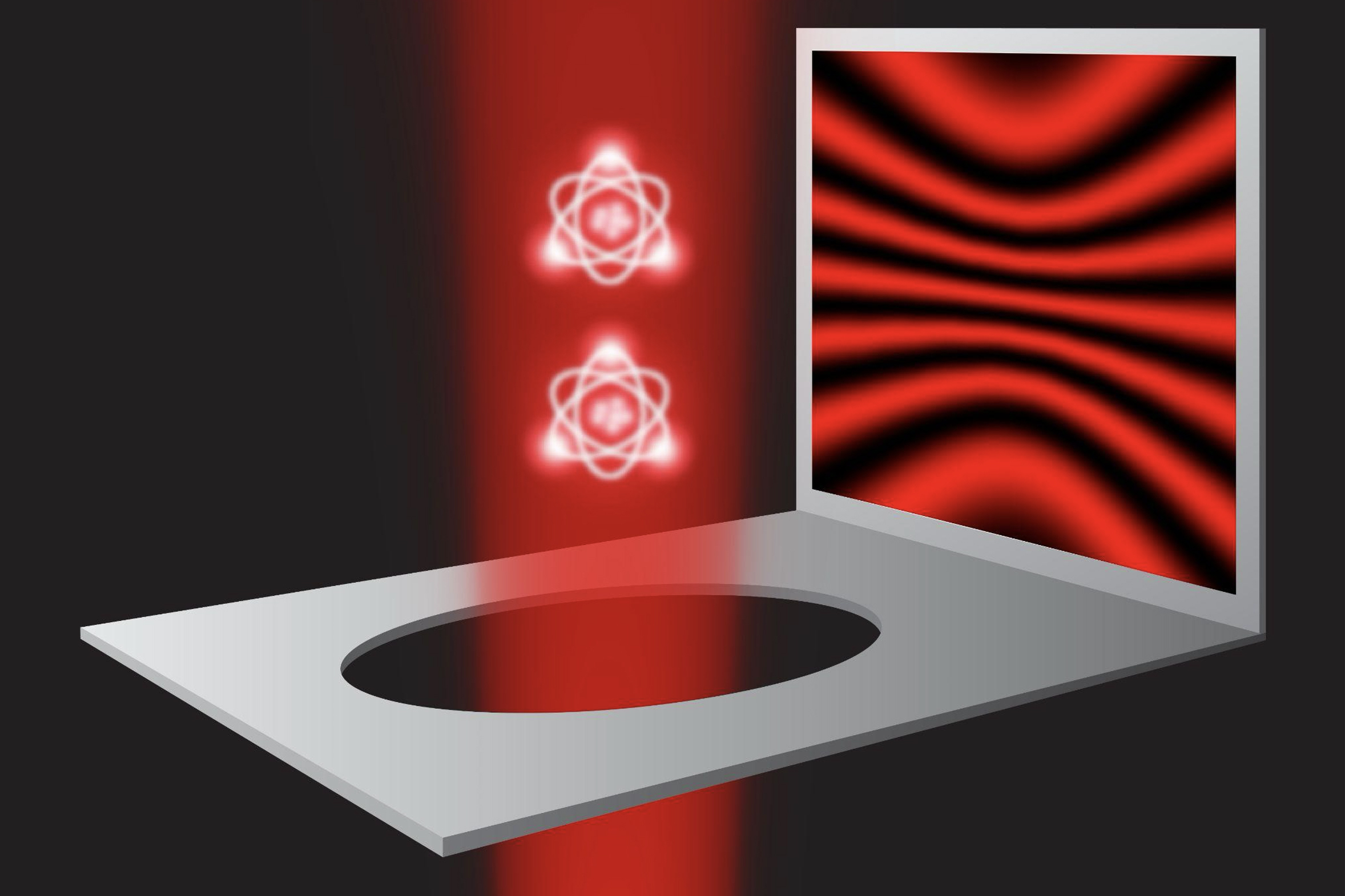Physicists at the Massachusetts Institute of Technology (MIT) have conducted an advanced version of the iconic double-slit experiment, offering groundbreaking insights into the dual nature of light. Their findings, published in the journal Physical Review Letters, not only reinforce quantum mechanics but also challenge a long-held view by renowned physicist Albert Einstein regarding the behavior of photons.
The double-slit experiment, originally performed by Thomas Young in 1801, demonstrated that light can behave as both a wave and a particle. This phenomenon, known as wave-particle duality, has perplexed scientists for centuries. When light passes through two closely spaced slits, it creates an interference pattern that indicates wave behavior. However, if an attempt is made to measure which slit the light travels through, the interference pattern vanishes, revealing its particle nature.
In their idealized experiment, the MIT team utilized individual atoms as slits and employed weak beams of light, allowing each atom to scatter at most one photon. By preparing the atoms in various quantum states, they successfully manipulated the information obtained about the photons’ paths. This method confirmed the principles of quantum theory: the more information gathered about a light’s particle nature, the less defined the interference pattern became.
Wolfgang Ketterle, the John D. MacArthur Professor of Physics at MIT and leader of the research team, highlighted the significance of their work. “Einstein and Bohr would have never thought that this is possible, to perform such an experiment with single atoms and single photons,” he stated, referring to the historical debate between Einstein and physicist Niels Bohr on the interpretation of quantum mechanics.
The MIT group cooled over 10,000 atoms to microkelvin temperatures, arranging them in a crystal-like lattice using laser beams. This configuration allowed the researchers to examine how a single photon scattered off two adjacent atoms, mimicking the original double-slit experiment’s setup. By adjusting the atoms’ “fuzziness,” or certainty of their positions, the researchers influenced the probability of photons behaving as either waves or particles.
In their exploration, the MIT team also tested Einstein’s theoretical proposition regarding detecting photons’ paths using a spring-like system. Historically, such systems were believed to play a crucial role in illustrating the dual nature of light. In a novel approach, Ketterle and his colleagues conducted their experiment without these spring mechanisms, demonstrating that the fuzziness of the atoms was the critical factor influencing light’s behavior.
The findings align with the quantum mechanical framework established by Bohr, confirming that the particle and wave aspects of light cannot be observed simultaneously. The research serves as a pivotal contribution to ongoing discussions in quantum mechanics, with significant implications for the future of the field.
As 2025 approaches, designated by the United Nations as the International Year of Quantum Science and Technology, the timing of this research coincides with the centennial of quantum mechanics. Co-author Yoo Kyung Lee remarked on the historical significance: “It’s a wonderful coincidence that we could help clarify this historic controversy in the same year we celebrate quantum physics.”
The MIT research was supported by the National Science Foundation, the U.S. Department of Defense, and the Gordon and Betty Moore Foundation, showcasing the collaborative effort and resources behind advancing our understanding of the quantum world.
